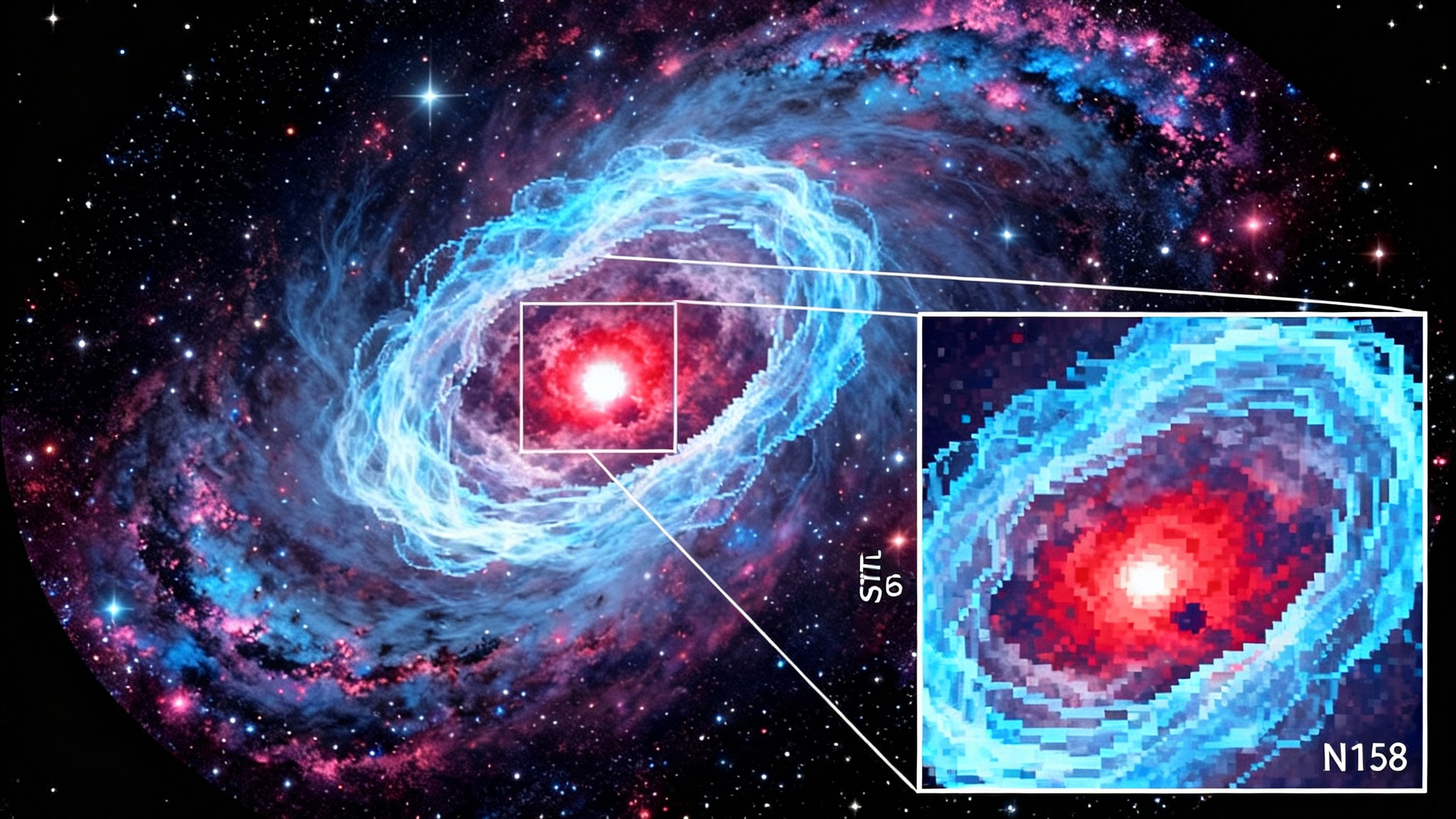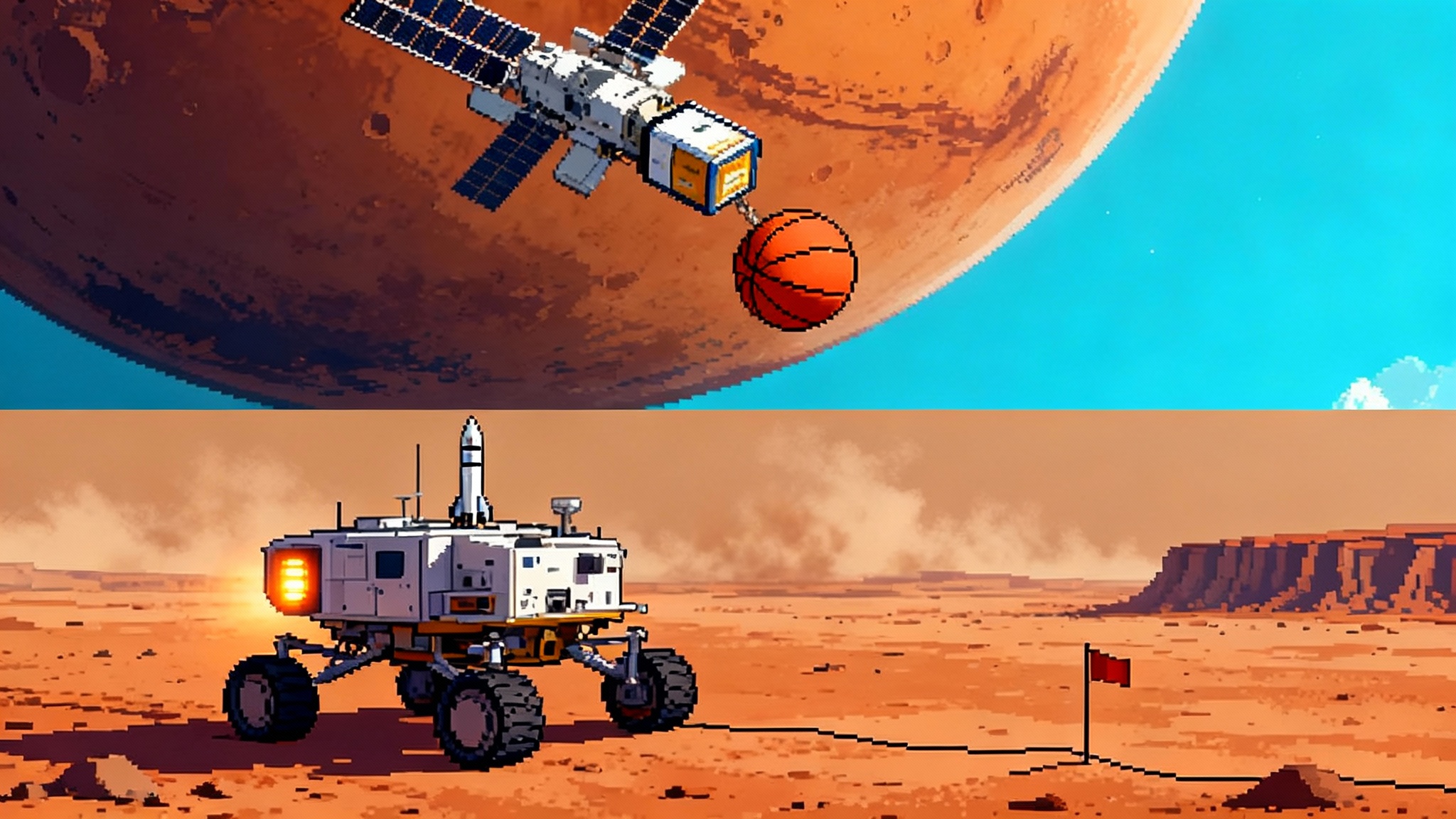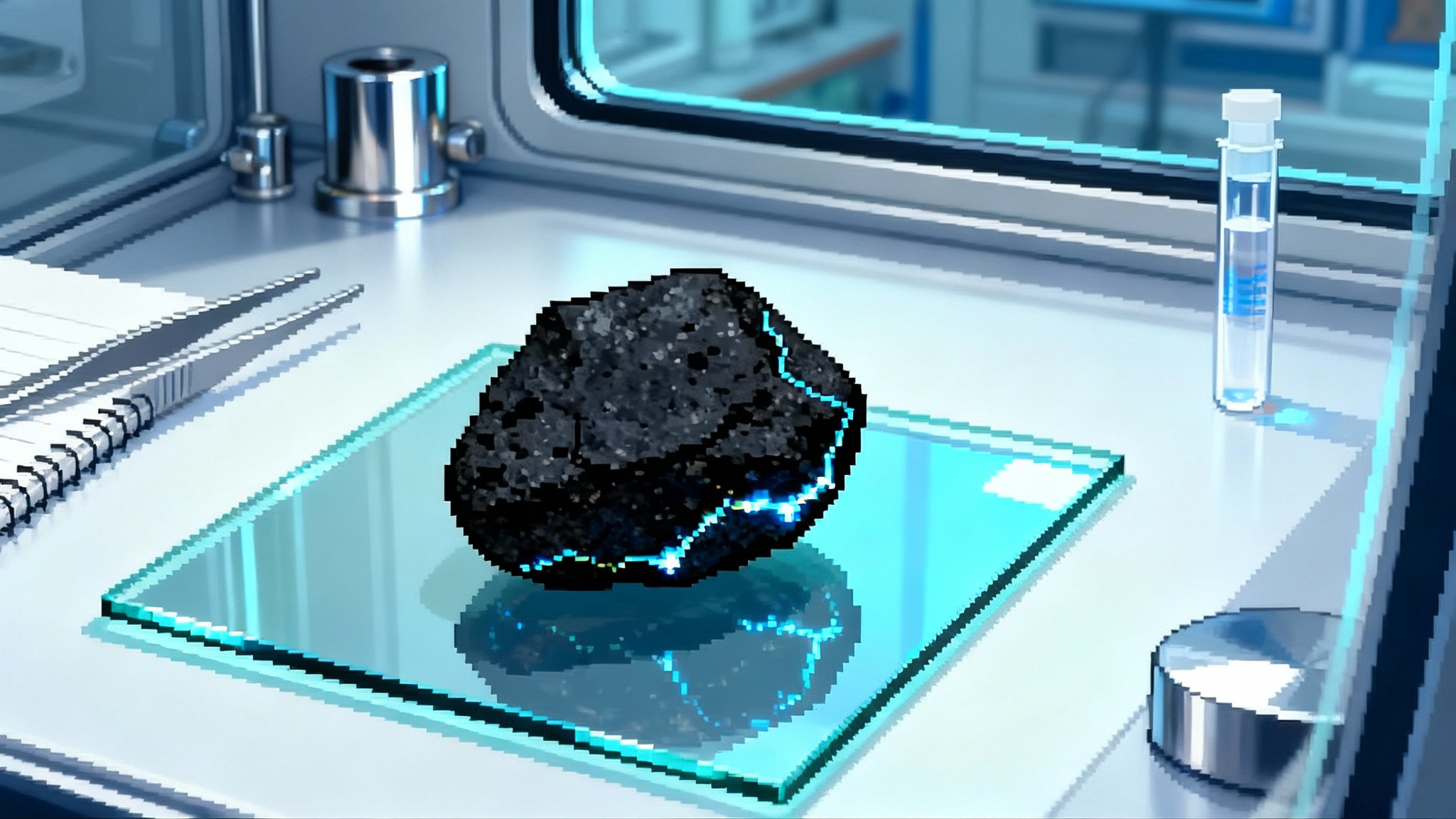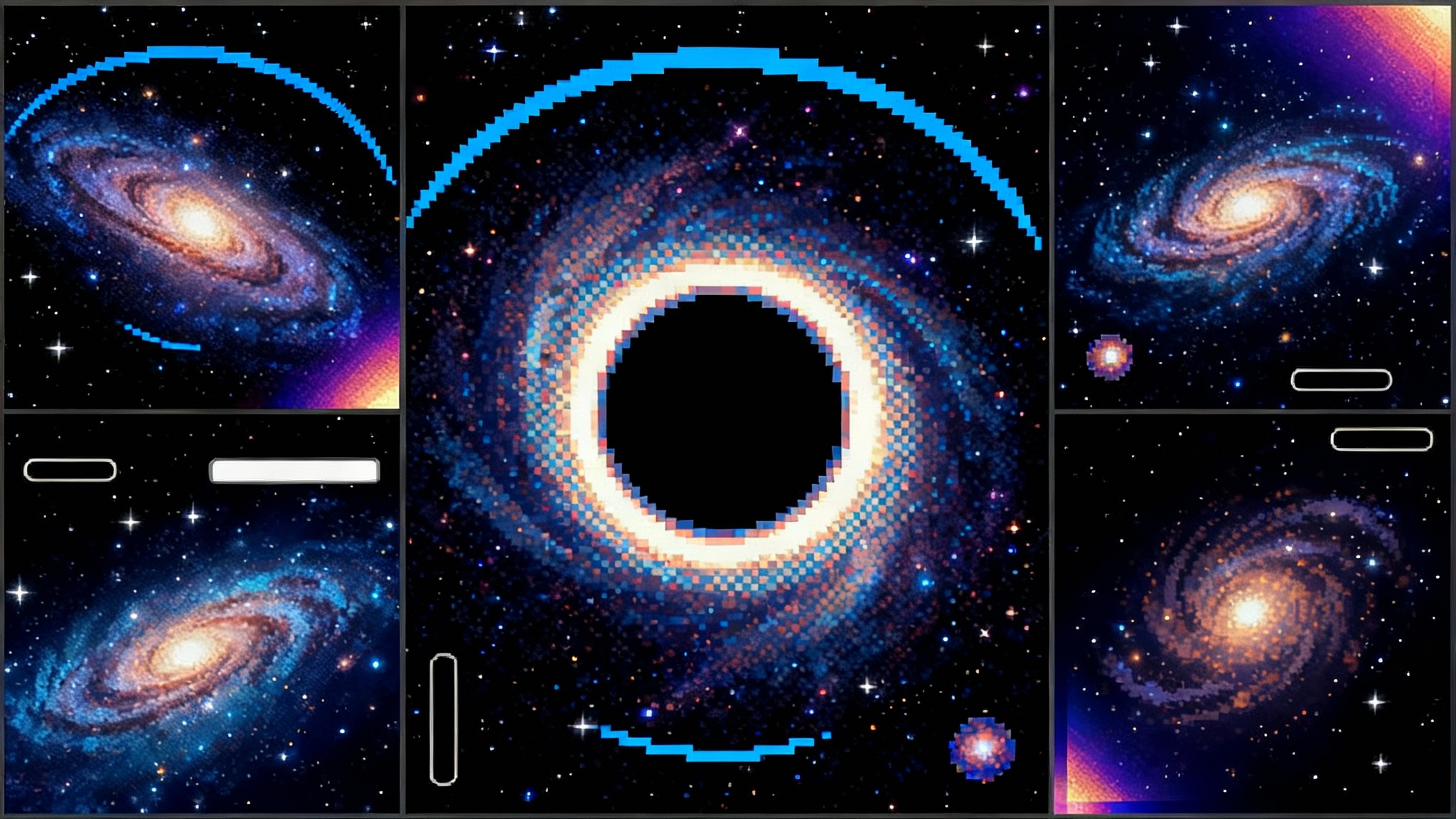Tianwen-2 to Kamoʻoalewa, a Hinge Moment for Exploration
China's Tianwen-2 is en route to Earth's quasi-moon Kamoʻoalewa to bring home samples in 2027, then chase active comet 311P. Here is how this mission could confirm a lunar-fragment origin and reset small-body science, cislunar traffic norms, and prospecting.

A small rock, a big pivot
China's newest deep space probe has slipped off the pad and into the spotlight. Tianwen-2 launched from Xichang on May 29, 2025 and is now on a multi-year chase to Earth's closest quasi-moon, the tiny asteroid Kamoʻoalewa, before dropping a sample capsule back to Earth in 2027 and then pressing on to a strange, shedding object in the main belt. The stakes are higher than the spacecraft's modest size suggests. If Tianwen-2 retrieves even a handful of grains from this dim speck and they look lunar in origin, the mission will sharpen our story of how the Earth-Moon system recycles material, while also accelerating how the world handles traffic, safety, and prospecting in cislunar space. China is not hiding its ambition. The country's space agency framed the launch as a step-change in interplanetary know-how, and early updates show the probe healthy in interplanetary cruise after its Long March 3B ride launched on May 29, 2025.
What exactly is a quasi-moon, and why pick this one?
Kamoʻoalewa is not a true moon. It orbits the Sun, not Earth, but it loops in a way that keeps it near us for centuries at a time. Picture a jogger on the inside lane who keeps pace with a walker in the outer lane; they circle the same track but only appear to move together for a while. That is Kamoʻoalewa's relationship with Earth. The object is roughly the size of a small building, spins in about half an hour, and may be a fragment of lunar crust. Ground-based spectra taken with large telescopes match weathered lunar silicates better than common asteroid types. A 2021 peer-reviewed study found its reflectance to be strikingly similar to Apollo-era samples, raising the prospect that it is a shard flung off the Moon by an ancient impact, later captured into its quirky co-orbital dance. Subsequent modeling work has shown that a rare but plausible set of launch conditions from the lunar surface can seed such an orbit. The clincher would be a lab test of unaltered grains from the asteroid itself, which Tianwen-2 is designed to bring home. For readers who want to see the evidence chain, the team's published analysis of Kamoʻoalewa's lunar-like silicate spectrum is a good starting point.
The plan, in three acts
-
Act 1: Cruise and approach. Using high-efficiency propulsion and a series of course tweaks, Tianwen-2 will reach Kamoʻoalewa in mid 2026 and spend months orbiting and station-keeping near the object. The spacecraft will map the shape, spin, and surface roughness, then scout for safe sampling zones. Expect a conservative tempo at first. On a world with near-zero gravity, even a gentle tap can bounce a spacecraft away like a hand off a beach ball.
-
Act 2: Sample and send. The mission targets roughly a hundred grams of material. That sounds small, but in planetary science it is more than enough to answer big questions, because laboratory instruments can extract mineralogy, chemistry, and age from grains smaller than a sesame seed. Tianwen-2 will attempt to collect this material with a mix of tactics chosen to match the asteroid's terrain and rotation state.
-
Act 3: Delivery and beyond. After packaging the sample in a heat-shielded capsule, the probe will line up a return corridor so the capsule can drop to Earth in late 2027. The main bus will not retire. It will dive back past Earth for a gravitational sling and set course toward 311P/PANSTARRS, an active body in the main belt, to watch how dust and possibly ice escape an object too small to act like a classical comet. That two-target itinerary turns one mission into a decade-long laboratory of small-body behavior.
How to grab a spinning pebble in microgravity
Space agencies have learned that there is no one-size-fits-all way to sample an asteroid. Japan's Hayabusa2 and NASA's OSIRIS-REx perfected a quick dip that looks like a hummingbird sipping nectar. China plans to combine that touch-and-go style with new tricks tailored to a rapidly spinning, very small target:
-
Hover-and-sweep. Instead of landing, Tianwen-2 can pause a few meters above the surface and reach down with a robotic arm. Imagine holding a paint roller out of a helicopter and lightly brushing a gravel driveway. It is delicate, but avoids the risk of a full touchdown if the surface is uneven or the spin rate would whip the contact point away.
-
TAG, the touch-and-go maneuver. This is the proven move. The spacecraft descends, kisses the surface for seconds, and uses a sampler head to gulp loose regolith. Because Kamoʻoalewa's gravity is feeble, the contact time must be short and the approach precisely timed to the asteroid's spin. Engineers will aim for a patch that looks smooth and fine-grained in imagery and laser data gathered during proximity operations.
-
Anchor-and-attach. This is the most ambitious option. Tianwen-2 carries hardware to bite into the surface and briefly pin itself down with multiple arms fitted with drills. If the surface is cohesive, this technique can extract subsurface material that has been shielded from harsh space weathering. That matters, because untouched grains carry pristine clues about formation and alteration that surface dust might have lost.
Each method answers a different scientific question. Hover-and-sweep tests the top dust. TAG samples loose aggregate. Anchor-and-attach reaches for the subsoil. Together they hedge against the unknown and vastly improve the odds of returning material that can distinguish between a lunar shard and a primitive asteroid.
What a Kamoʻoalewa sample could settle
If the grains are lunar, laboratory tools will show it. Oxygen isotope ratios act like a barcode for planetary bodies. Pyroxene and plagioclase textures can trace magmatic history. Track densities left by cosmic rays can reveal how long the grains baked in space. If those signatures point to the Moon, a quasi-moon sample would become the first confirmed piece of the Moon traced to a modern orbiting body rather than a meteorite found on Earth. That would tighten models of how often lunar impacts eject rocks at escape velocities, and how those fragments migrate into Earth-like orbits. If instead the sample looks like weathered ordinary chondrite or basalt unlike lunar rocks, that would be equally important. It would mean that surface processes and viewing geometry made the asteroid masquerade as lunar from a distance, a cautionary tale for interpreting spectra of other small bodies.
Either outcome fills a key gap. Scientists will use the grains to calibrate telescope observations of other hard-to-see objects and to tune models of the small-body population that passes through cislunar space. For context on how returned samples can change the field, see how the Bennu sample rewrites life's recipe.
The comet coda: why 311P matters
After the handoff in 2027, Tianwen-2's stretch mission targets 311P/PANSTARRS, a curious main belt object that occasionally sprouts multiple dust tails. Astronomers debate whether volatile ices, fast spin shedding, or impacts drive that activity. A close-up campaign, even a flyby, can watch the surface evolve in real time. That turns the mission into a natural experiment about how small bodies lose material. For resource prospectors, that is a live demonstration of where to look for trapped volatiles and how fragile surfaces behave when stressed by sunlight and spin.
A hinge for cislunar traffic norms
The Earth-Moon neighborhood is about to get busy. Sample couriers, lunar landers, communications relays, and inspection craft will all share the same highways. Tianwen-2 adds a new traffic pattern: repeated close passes of Earth by a spacecraft carrying a sealed capsule, timed burns coordinated with navigation data that other operators may want to avoid, and a return corridor that must remain clear around landing.
Practical implications and actions for operators and policymakers:
-
Publish approach and return corridors early. Mission owners, including the China National Space Administration and the China Aerospace Science and Technology Corporation, can set a precedent by releasing time-tagged navigation boxes for Kamoʻoalewa proximity ops and for the 2027 reentry window. That helps other agencies plan maneuvers for spacecraft in cislunar space.
-
Share ephemerides for small bodies on the same cadence as spacecraft updates. Kamoʻoalewa's position will be tracked far better during the mission. Making those refined ephemerides widely available improves conjunction analysis for all.
-
Adopt keep-out and keep-in volumes around small bodies. A simple geometry standard, similar to the safety volumes used around the International Space Station but adapted for microgravity and rapid rotation, would reduce the risk of unplanned interference if multiple craft ever visit the same target.
-
Align communications windows. Deep space networks in China, Europe, and the United States will all be busy. Publishing deconfliction schedules for high-power transmissions near critical sampling or reentry operations would reduce cross-interference and help prevent data loss.
As heavy-lift traffic and sample logistics expand, they will intersect with commercial operations outlined in the industry fast track to Mars Sample Return and with new payload flows such as Starship's 2025 pivot to payload ops.
Planetary defense, rehearsed at full scale
Deflecting a hazardous object demands precise navigation, autonomous hazard detection, and intimate knowledge of how regolith behaves when pushed, drilled, or blasted. Tianwen-2's operations touch all three.
-
Autonomy in chaotic fields. Proximity flight around a tiny, fast rotator forces the guidance system to make decisions without waiting for instructions from Earth. Those algorithms are directly relevant to rapid-response missions that may have to intercept an incoming threat on short notice.
-
Anchoring physics. If anchor-and-attach works, engineers will gain real data on how quickly a small body can accept a load without tearing apart, and what anchor geometries hold. That informs designs for future kinetic impact experiments or tug missions that need a firm grip.
-
Regolith response. Sampling will measure how dust flies, sticks, or collapses when disturbed. Those parameters feed into impact-risk assessments for deflection missions so that plume and ejecta do not disable the spacecraft tasked with the job.
Concrete next steps: share shape models and gravity field estimates broadly; publish de-identified performance data from anchoring and sampling; and run joint tabletop exercises that plug Tianwen-2's measured properties of Kamoʻoalewa into deflection simulations. Nothing accelerates preparedness like real numbers from a real object.
A prospecting playbook for the late 2020s
Small bodies are natural resource catalogs. The point is not to mine Kamoʻoalewa itself, which is tiny, but to learn where to look and how to work on microgravity surfaces. Three outcomes would immediately influence prospecting plans:
-
If the sample is lunar, then fragments scattered in Earth-like orbits could be predictable sources of lunar-type material already close to home. That would shift some resource scouting to quasi-satellites and co-orbitals where delta-v is modest and mission timelines are shorter.
-
If Tianwen-2 confirms dust shedding mechanisms at 311P, prospectors gain a field guide to where volatiles hide and how sunlight and spin stress expose them. That could help rank targets for water-harvesting demonstrations.
-
If the anchor-and-attach method proves reliable, the technique becomes part of the standard toolkit for surface work. Add it to coring, TAG, and hover-sampling. Companies designing capture devices and quick-deploy drills for low-gravity environments will have a real benchmark rather than lab surrogates.
For investors and program managers, the action item is straightforward: fund technology maturation that directly maps to Tianwen-2's demonstrated envelope. That means quick-retract booms that can survive grazing impacts, multi-point anchoring systems tuned for centimeter-scale roughness, and containment solutions that keep ultra-fine dust from clogging mechanisms. Results in hand by 2027 could feed into the next procurement cycles for commercial small-body demonstrators.
Who learns what, and when
The results will not arrive all at once. Expect a sequence:
-
2025 to early 2026: cruise health checks, instrument calibrations, and navigation camera imaging. Even during cruise, radiation and dust sensors will return data that calibrate our understanding of the interplanetary environment.
-
Mid 2026: first close imagery of Kamoʻoalewa. The initial rewards are shape models and spin state. These alone improve hazard forecasts for any future encounter with Earth-sized visitors.
-
Late 2026 to early 2027: sampling attempts. Watch for confirmation of which technique worked best and how much material was stowed.
-
Late 2027: sample delivery and preliminary lab announcements. Early lab results will cover grain size distribution, volatile content, and bulk mineralogy. More detailed isotopic and age dating will take months to years.
-
2028 and beyond: publications that lock in the origin story, plus the first activity maps of 311P once Tianwen-2 arrives there later in the decade.
The competitive collaboration we should embrace
There is no need to choose sides to appreciate what Tianwen-2 brings. Japan's Hayabusa missions proved that tiny couriers can deliver cosmic time capsules. NASA's OSIRIS-REx returned a jackpot from Bennu and demonstrated just how fluffy some asteroids can be, as our own coverage on the Bennu sample rewrites life's recipe shows. Europe’s Hera is about to map the altered Didymos system in the wake of a kinetic impact. China now adds a quasi-moon and an active main-belt object to this shared dataset. Together these missions form a connected curriculum for the small-body era. Each fills a gap the others leave, and each nudges the rest of us to raise our game on transparency, coordination, and speed.
The hinge swings now
Tianwen-2 will be judged by grams of dust in a capsule, but its real impact reaches further. It codifies a new playbook for sampling tiny, twitchy targets. It pressures spacefaring nations to treat cislunar space like a managed commons rather than an unlit back road. It gives planetary-defense planners real data for anchoring, ejecta, and autonomous flight, the messy details that make the difference between a clean deflection and a near miss. And it offers prospectors a preview of how to work where gravity barely helps. That is a lot of leverage from a small rock.
When that capsule streaks over the horizon near the end of 2027, do not just ask what is inside. Ask what doors it has opened. The hinge is already turning.








